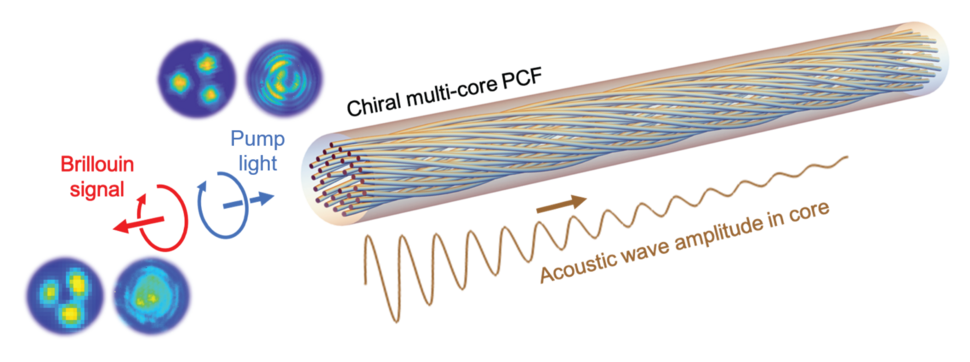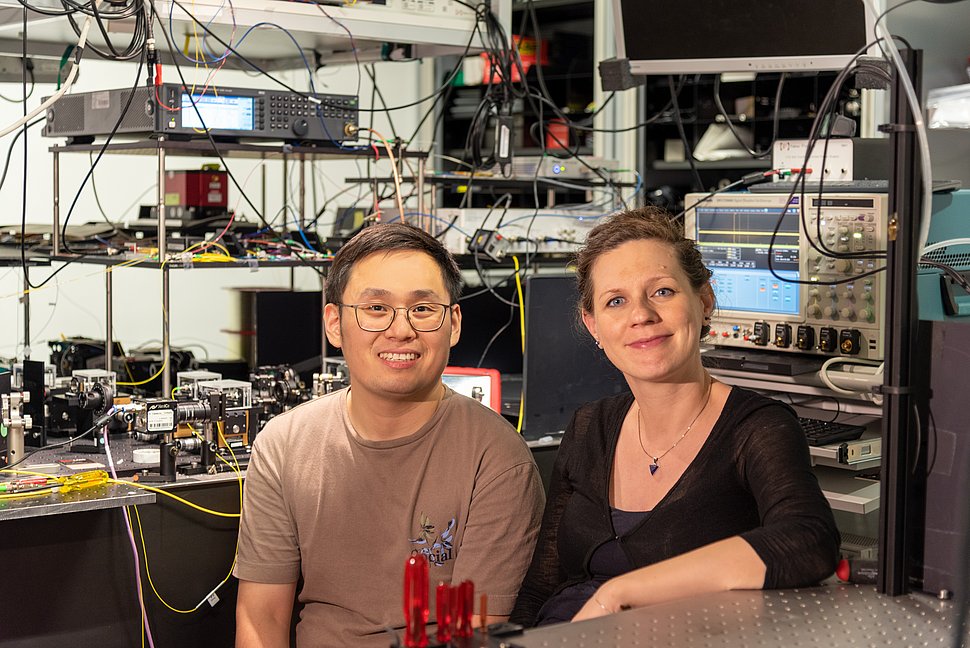Breakthrough in optical information transmission: One-Way Street for optical vortices
Scientists at the Max Planck Institute for the Science of Light have managed for the first time to create a unidirectional device that significantly increases the quality of a special class of transmitted signals in optical communications: optical vortices. By transmitting selective optical vortex modes exclusively unidirectionally, the developed device largely reduces detrimental backscattering to a minimum. The scientists emphasize the great practical utility of their discovery in many optical systems, with applications ranging from mode division multiplexed communications, optical tweezers, vortex lasers to quantum manipulation systems.


Optical communication can be improved by increasing the amount of optical information transmitted. This can be achieved by using multiplexed channels such as using many optical wavelengths, different polarization states or multiple time slots. In the last decade, optical spatial modes, which are the eigenfields in the waveguides, are widely exploited to further improve the communication capacity due to the little crosstalk between orthogonal spatial modes.
In classical communication as well as in quantum communication, the use of vortex modes in multiplexing methods has proven to be advantageous. This special mode set possesses a helical optical phase distribution and allows an additional degree of freedom for multiplexing optical signals. Devices like vortex generators, lasers and signal amplifiers were demon-strated and are in great demand.
A limiting effect on the applicability is that there has not yet been a device that permits transmission of certain vortex modes in one direction but not the opposite one. However, just this kind of device – a so-called optical vortex isolator – is of crucial importance for the improvement of signal quality and purity. The particular difficulty in developing such a device is a fundamental principle of optics: reciprocity. It requires a symmetrical response of a transmission channel when the source and observation points are interchanged.
Researchers succeed in building an optical vortex insulator
Now, a team at the Max Planck Institute for the Science of Light led by Xinglin Zeng, Philip Russell and Birgit Stiller, achieved a breakthrough that makes this possible: They used sound waves that propagate only in one direction to break the light transmission reciprocity for chosen vortex modes. The effect of so-called topology-selective Brillouin-Mandelstam scattering in chiral photonic crystal fibre allows for a unidirectional interaction of vortex-carrying light waves with traveling sound waves. A specific optical vortex can be strongly suppressed or amplified with a well-designed control light. The experimental results published in Science Advances show a significant vortex isolation rate, preventing random backscattering and signal degradation in the system.
“This is the first nonreciprocal system for vortex modes, which opens up a new perspective in nonreciprocal optics – the same physical effect can happen not only on the fundamental modes but also on higher-order modes” says Xinglin Zeng, the first author of this paper. “The light-driven optical vortex isolator will have great impact on the applications such as optical communications, quantum information processing, optical tweezers, and fiber lasers. I find the possibility of selective manipulation of vortex modes solely by light and sound waves a very fascinating concept” says Birgit Stiller, the leader of the Quantum Optoacoustics Research Group.
Picture 1 (Reprinted with permission from Xinglin et. al, Science Advances 8, abq6064 (2022)): Visualisation of topology-selective Brillouin scattering effect in chiral photonic crystal fibre. Linear arrows are propagation direction and circular arrows are circular polarisation states or vortex phases.
Picture 2 (© MPI for the Science of Light): Xinglin Zeng and Birgit Stiller in their lab at the Max Planck Institute for the Science of Light.
Contact:
Xinglin Zeng, xinglin.zeng@mpl.mpg.de
Birgit Stiller, birgit.stiller@mpl.mpg.de
Original publication:
Xinglin Zeng, Philip St.J. Russell, Christian Wolff, Michael H. Frosz, Gordon K. L. Wong and Birgit Stiller, “Nonreciprocal vortex isolator via topology-selective stimulated Brillouin scattering”, Science Advances 8 (2022), www.science.org/doi/10.1126/sciadv.abq6064
Contact
Edda Fischer
Head of Communication and Marketing
Phone: +49 (0)9131 7133 805
MPLpresse@mpl.mpg.de





